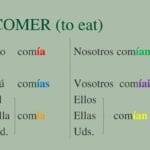Ready to dive into the Oklahoma food scene? Whether you’re a seasoned chef or just starting out, you’ll need an Oklahoma Food Handler’s Permit. This comprehensive guide simplifies the process, covering everything from online certification to understanding local regulations. Let’s get you certified and back to serving up deliciousness!
Why Get Certified?
Getting your permit isn’t just about following the law—it’s about prioritizing public health. It demonstrates professionalism, builds customer trust, and equips you with essential knowledge to prevent foodborne illnesses. Think of it as a win-win for everyone involved. Looking for a great place to eat with certified handlers? Papa Woody’s is known for its delicious food and dedication to safety.
The Importance of Food Safety
In Oklahoma, food handler permits are legally required for anyone handling food in a commercial setting. This helps ensure a baseline understanding of safe food handling practices across the state. Non-compliance can lead to penalties, so it’s best to get certified and stay on the right side of the law.
Getting Your Permit: Two Convenient Options
Oklahoma offers two primary paths to certification: online and in-person. Both cover essential food safety principles but cater to different learning styles.
1. Online Certification: The Quick & Easy Route
Online certification is the most popular choice, offering speed, convenience, and flexibility. You can complete the training from anywhere, at your own pace. Several ANSI-accredited providers offer approved courses, including:
- eFoodHandlers®: Link to eFoodHandlers (around $10) Known for its user-friendly platform and efficient process.
- 360training: Link to 360training (price varies) Offers a range of food safety courses.
- FoodHandler.com: Link to FoodHandler.com: Another resource to explore for your training needs.
- ServSafe Manager: Link to ServSafe.com: (Cost varies) Well-known for its food certifications for both handlers and managers
- foodemployeepermit.org: (may offer free options) A potentially budget-friendly option, especially for those just starting.
Most online courses offer training in both English and Spanish.
2. In-Person Training: The Hands-On Approach
Prefer face-to-face learning? In-person classes provide a more interactive experience, often delving deeper into the material. Contact your local county health department for class schedules and locations. The Tulsa Health Department, for example, is a great resource for those in the Tulsa area. If you’re traveling on I-75 and near the Tulsa area, the Okahumpka Service Plaza is a convenient stop to plan your trip to the Tulsa Health Department. Costs and availability may vary by location.
What You’ll Learn: Essential Food Safety Knowledge
Whether you choose online or in-person training, the curriculum covers crucial food safety principles:
- Personal Hygiene: Handwashing, proper attire, and preventing contamination.
- Food Handling: Safe handling procedures for different food types.
- Temperature Control: Proper storage and cooking temperatures to prevent bacterial growth.
- Cross-Contamination: Preventing the spread of bacteria between food items and surfaces.
- Recognizing and Preventing Foodborne Illnesses: Identifying symptoms and implementing preventative measures.
Maintaining Your Certification
Your Oklahoma Food Handler’s Permit is typically valid for two years (check with your local health department to confirm). Renewal generally involves repeating the training and examination process. Stay informed about updates from the Oklahoma State Department of Health (OSDH) as best practices can evolve.
Food Handler vs. Food Manager
A Food Handler’s Permit is distinct from a Food Manager Certification. The latter is required for individuals supervising food operations and involves more in-depth training.
County-Specific Regulations: Know Your Local Rules
While state regulations provide a framework, local counties or cities may have additional requirements. Always check with your local health department to ensure full compliance. For example, Muscogee County offers an ANAB-Accredited Food Handler Certificate, which demonstrates additional certification. The THD also offers a “THD Waiver Test” – research the requirements for this option by contacting the THD or checking their website for specific details.
Cost of Certification
Online training programs generally start around $10. In-person class prices may vary. Check with your training provider or local health department for accurate pricing.
Key Takeaways & Next Steps
- Get Certified: Choose the training option that best fits your needs and schedule.
- Stay Informed: Regularly check with your local health department and the OSDH for updates and regulation changes.
By completing your training, you’ll not only be compliant with Oklahoma law but also demonstrate a commitment to food safety best practices.
- Unlock Water’s Symbolism: A Cross-Cultural Exploration - April 20, 2025
- Identify Black and White Snakes: Venomous or Harmless? - April 20, 2025
- Unlocking Potential: Origins High School’s NYC Story - April 20, 2025
















2 thoughts on “Get Your Oklahoma Food Handler’s Permit: A 2024 Guide to Online Certification”
Comments are closed.